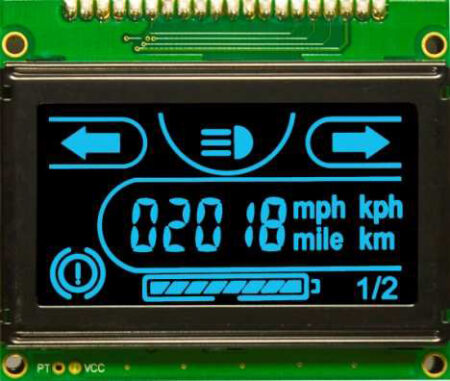OLED Display Panels are made from organic light emitting diodes – solid state devices composed of thin films of organic molecules that create light with the application of electricity. As OLEDs emit light, they have the advantage of not requiring backlighting, making them ideal for handheld instrumentation, automotive displays, portable media players, audio visual display systems and mobile phones.
OLED devices can be passive matrix (PMOLED) or active matrix (AMOLED). An AMOLED display consists of an active matrix of organic OLED pixels which have been deposited or integrated onto a TFT array. The TFT array acts as an array of switches, controlling the current flowing to each individual OLED pixel. Thus AMOLED relies on TFT backplane technology – essential in OLEDs above about 1.8” to keep the current stable and the display uniform. AMOLED does not tend to be viable for low volume applications.
PMOLEDs use a simpler control scheme in which each row in the display is controlled sequentially.
Click here to view our range of OLED displays

The advantages of using OLEDs include:
- Better contrast, sharper images and more vibrant colours than all other technologies
- Fast response time (microseconds rather than milliseconds) meaning no motion blue
- Small size and light weight
- Lower power consumption than equivalent LCD
- High contrast (>1000:1) giving ultra-sharp images
- Excellent colour definition
- Improved performance at equivalent brightness
- Wide viewing angle >170°
- Wide operating temperature range -40°C to +70°C
